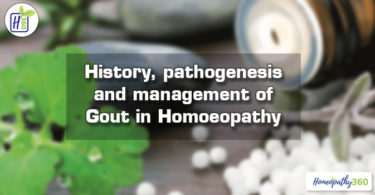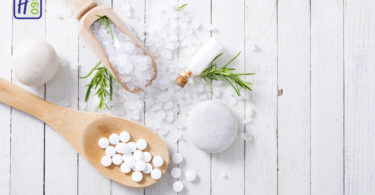Authors:
Dr. Nanritam Chopra1 and Dr. Anjana kumari 2
- MD (PGR), Dept. of Materia Medica, Dr. MPK Homoeopathic Medical College ,Hospital & Research Centre (A constituent unit of Homoeopathy University, Saipura, Jaipur, Rajasthan) India.
- MD (PGR), Dept. of Organon of medicine, Dr. MPK Homoeopathic Medical College ,Hospital & Research Centre (A constituent unit of Homoeopathy University, Saipura, Jaipur, Rajasthan) India.
ABSTRACT- Everybody faces many problems in their lives be it mental or physical. Depression being the most common condition of mind represented by melancholy and loss of confidence regarding everything. This state of mind can be in episodes, recurrent or persistent. Any age group is vulnerable to this condition and its clinical presentation is almost same in adults as in younger ones, but may differ in their causes: e.g. from loss of dear ones, chronic illnesses, after retirement etc. There are many medicines in Homoeopathy which can be given to cure depression, can be selected according to the peculiar symptoms and the cause in different cases, hence giving an easy path for Homoeopathic physician to the similimum for the patient.
Keywords- Depression, Types of depression, management, Homoeopathy for depression
Introduction –
Depression is a mood disorder that causes a persistent feeling of sadness , loss of interest or confidence with lack of vigour that may also hamper with the sleep and appetite . being derived from a Latin word ‘Deprimere’ meaning ‘Press down’. The American Psychiatric Association’s Diagnostic Statistical Manual of Mental Disorders, Fifth Edition (DSM-5) classifies the depressive disorders into:
- Disruptive mood dysregulation disorder
- Major depressive disorder
- Persistent depressive disorder (dysthymia)
- Premenstrual dysphoric disorder
- Depressive disorder due to another medical condition
The common features of all the depressive disorders are sadness, emptiness, or irritable mood, accompanied by somatic and cognitive changes that significantly affect the individual’s capacity to function.
Prevalence -Depression is one of the most common mental health problems. It is estimated that 16 to 20 out of 100 people will have depression or a chronic low mood (dysthymia) at least once in their lives. Women are affected more than men, and it is more common in older people.
Symptoms –
People who have depression fall into an emotional black hole for weeks or months, and often can’t see any way out. Different people experience depression differently. Some mainly feel sad and down. Everything seems pointless. Nothing and nobody can lift their spirits. Others aren’t sad, but instead feel empty inside, exhausted and emotionally numb. And some may suffer from agonizing worries, fears and anxiety. Typical signs of depression include:
- Feeling down all the time
- Loss of energy and motivation, exhaustion
- Lack of joy and interest, even in things and hobbies that used to be enjoyable
- Low self-esteem and low self-confidence
- Feeling guilty and constantly brooding over things
- Difficulties concentrating and making decisions
- Apathy and emotional numbness
- Withdrawing from friends and family
- Hopelessness and worrying about the future
- Not wanting to live anymore, or suicidal thoughts
Physical symptoms that are sometimes associated with depression include:
- Tiredness
- Sleep problems
- Loss of appetite
- Weight loss or gain
- Loss of sexual desire
- Digestion problems, such as constipation
- Increased sensitivity to pain
Physical symptoms like the above are particularly common in older people.
Depression can arise at any age, in various phases of life and under various circumstances. Little things influence the symptoms of depression and sometimes the way people behave and those around them experience depression too. For example, in older people, depression is often wrongly interpreted as a sign of old age or dementia.
Risk Factors
Risk factors that predispose patients to depression include:
- Female gender
- History of anxiety
- History of eating disorders
- First-degree relative with a history of depression
- History of or current drug or alcohol abuse
- History of or current sexual abuse or domestic violence.
Diagnosis – To find out whether someone is suffering from depression , psychotherapists go for two things: Firstly, they ask about the signs of depression. They also try to rule out other illnesses or health problems that can cause similar symptoms. To do so, the health professional might need to perform physical examinations or tests too.
The typical symptoms of depression can be divided up into “core symptoms” and “secondary symptoms.”
The core symptoms include:
- Low mood, sadness, feeling down
- Lack of interest and joy
- Lack of motivation and feeling very tired, even after minor activities
The secondary symptoms that help to determine the severity of depression are :
- Loss of appetite
- Sleep disorders
- Difficulty in concentrating and making decisions
- Low self-esteem
- Feelings of guilt
- Negative and pessimistic thoughts about the future
- Suicidal thoughts or suicide attempts
If someone has several core and secondary symptoms over a period of two weeks or longer, they are diagnosed with depression. Special questionnaires about the symptoms are often used to help with the diagnosis. Depending on the number, type and severity of symptoms, the depression is considered to be mild, moderate or severe. The treatment options will depend on how severe the depression is.
The following are some Homoeopathic medicines which can be employed in the treatment of depression according to their symptom similarity :
Arsenicum album: Anxious, insecure, and perfectionist people who need this remedy may set high standards for themselves and others and become depressed if their expectations are not met. Worries about material security sometimes borders on despair. When feeling ill, these people can be demanding and dependent, even suspicious of others, fearing their condition could be serious.There is loss of hope with weariness of life or excessive fear of death thinking that it is very near.
Aurum metallicum: This remedy can be helpful to serious people, strongly focused on work and achievement, who become depressed if they feel that they have failed in some way in their task with silent brooding . Discouragement, self-reproach, humiliation, and anger can lead to feelings of emptiness and worthlessness. Low spirits with increased blood pressure. The person may feel worse at night, with nightmares or insomnia accompanied by suicidal thoughts.
Causticum: A person who feels depressed because of grief and loss (either recent or over time) may benefit from this remedy. Frequent crying or a feeling of mental dullness and forgetfulness (like anxiously checking to see if the door is locked, if the stove is off, etc.). People who need this remedy are often deeply sympathetic toward others and having a strong sense of justice, can be deeply discouraged or angry about the world.they become tired with prolonged struggles and anxieties and may start forebonding some happenings. Thinking about the complaint aggravates the condition.
Kali phosphoricum: If a person feels depressed after working too hard, being physically ill, or going through prolonged emotional stress or excitement, this remedy can be helpful. Exhausted, nervous, and jumpy, may have difficulty working or concentrating and become discouraged and lose confidence. Headaches from mental effort, easy perspiration, sensitivity to cold, anemia, insomnia, and indigestion are often seen when this remedy is needed.
Natrum muriaticum: These personalities are reserved and responsible—yet have strong inner feelings ( be it grief, romantic attachment, anger, or fear of misfortune) that they rarely show. Even though they want other people to feel for them but can get angry if someone tries to console them and need to be alone to weep. Anxiety, brooding about past grievances, migraines, back pain, and insomnia can also be experienced when the person is depressed. A craving for salt and tiredness along with other ailments from sun exposure are other indications for this remedy.
Pulsatilla: Persons having childlike softness and sensitivity—and can also be whiny, jealous, and moody. When depressed, they are sad and tearful, craving a lot of attention and comforting. Crying, fresh air, and gentle exercise usually uplift their mental symptoms. While getting too warm or being in a stuffy room can increase anxiety. Depression around the time of hormonal changes (puberty, menstrual periods or menopause) can often be helped with Pulsatilla.
Sepia: People who feel weary, irritable with indifference to family members and worn out by the demands of everyday life may respond to this remedy. They want to be left alone and may respond in an angry or rude way if anyone bothers them. They often feel better from crying, but would rather want others keep their distance and not try to console or cheer them up. Menstrual problems, a sagging feeling in internal organs with sluggish digestion and improvement from vigorous exercise are other indications for this remedy.
Staphysagria: Quiet, sensitive, emotional people who have difficulty in standing up for themselves may benefit from this remedy. Internal hurt feelings, shame and suppressed emotions can lead them to depression. If under too much pressure, they can sometimes lose their natural inhibition of display and fly into rages or throw things. A person who needs this remedy may also have insomnia (i.e. feeling sleepy all day, but unable to sleep at night), toothaches, headaches or bladder infections that are stress-related.
Reference:
1. Salik I, Marwaha R. StatPearls [Internet]. StatPearls Publishing; Treasure Island (FL): Mar 13, 2019. Electroconvulsive Therapy.
2. Singh R, Marlowe D. StatPearls [Internet]. StatPearls Publishing; Treasure Island (FL): Apr 2, 2019. Provider Burnout.
3. Ormel J, Kessler RC, Schoevers R. Depression: more treatment but no drop in prevalence: how effective is treatment? And can we do better? Curr Opin Psychiatry. 2019 Jul;32(4):348-354.
4. Kanter J, Busch A, Weeks C, Landes S. The nature of clinical depression: Symptoms, syndromes, and behavior analysis. The Behavior Analyst. 2008;31(1):1-21.
5. Ng C, How C, Ng Y. Major depression in primary care: making the diagnosis. Singapore Medical Journal. 2016;57(11):591-597.
6.McCarter T. depression overview. 2008;:44–51.
7. Dr. D.B. Cohen (MS Encarata Encyclopedia 2002)
8.Boericke W. Pocket Manual of Homoeopathic Materia Medica and Repertory. 9th Edition. New Delhi: B. Jain Publishers (P) Ltd; 2009.
9.Clarke, J.H. A Dictionary of Practical Materia Medica. New Delhi: B. Jain Publishers; 1999.
10.Nash EB. Leaders in Homoeopathic Therapeutics with Grouping and Classification. Low price edition. New Delhi: B.Jain Publishers (P); 2014





